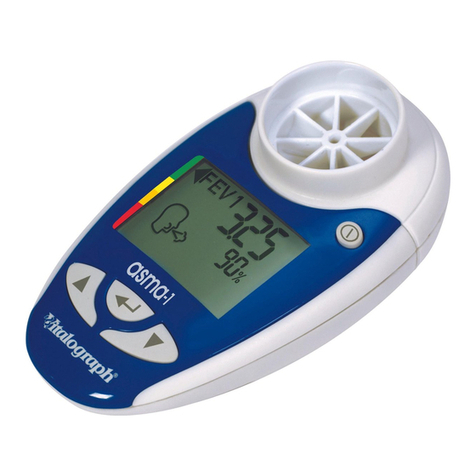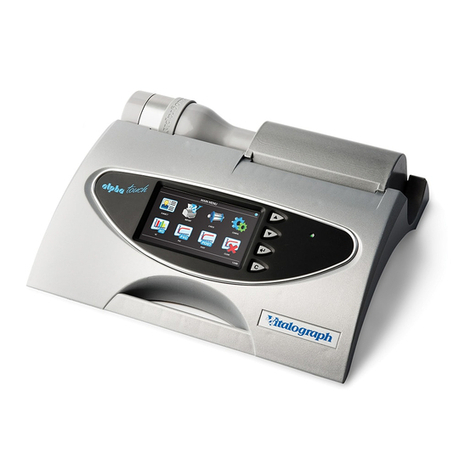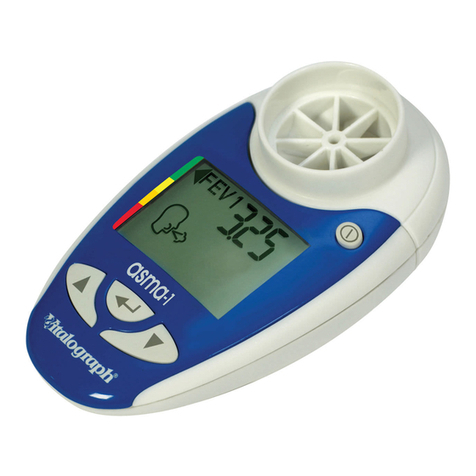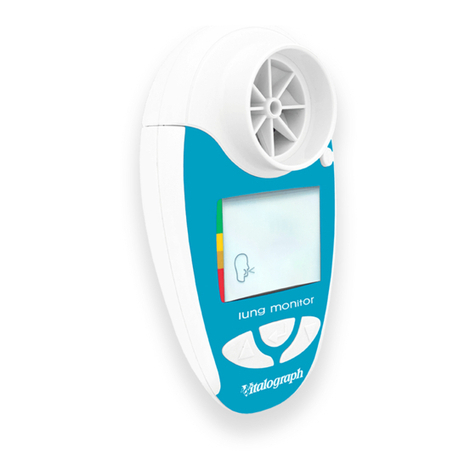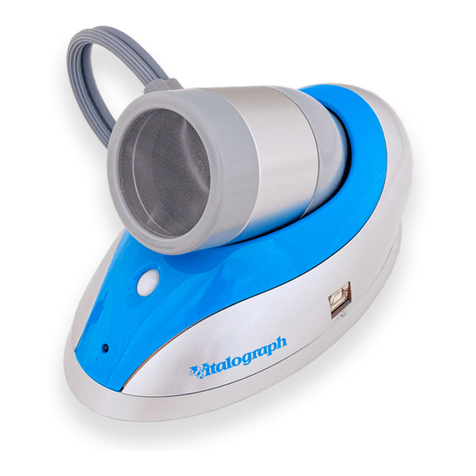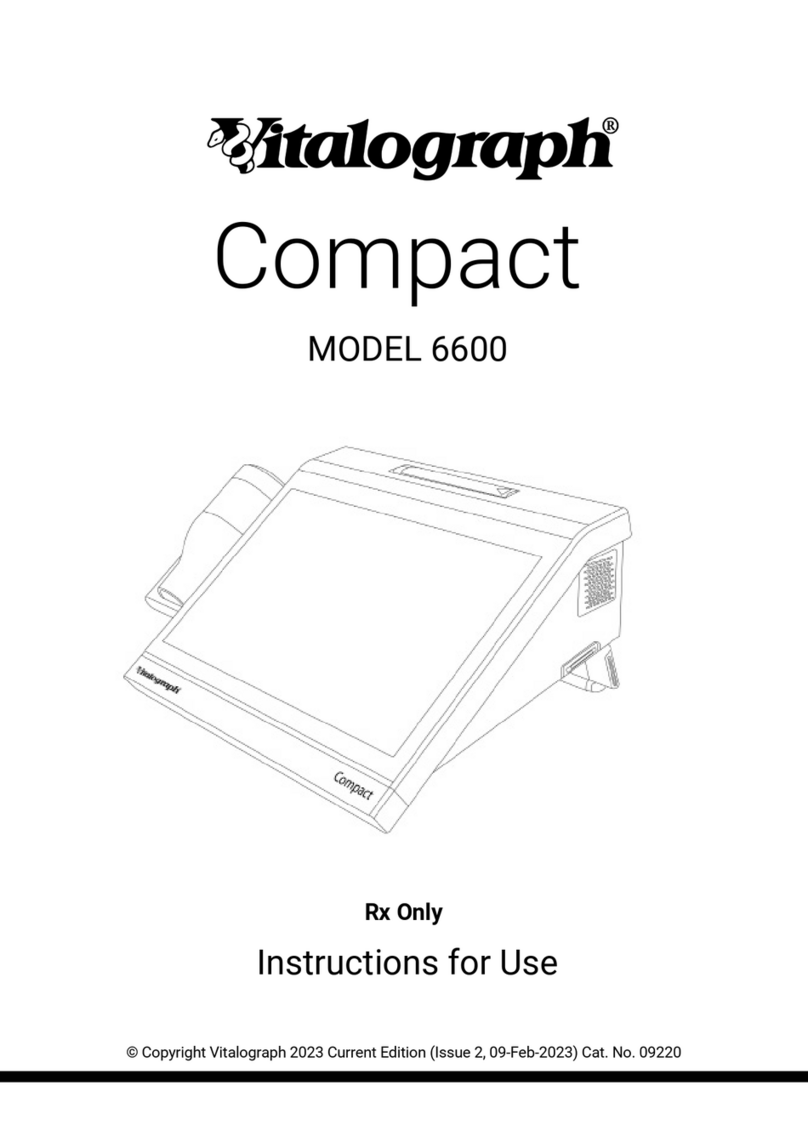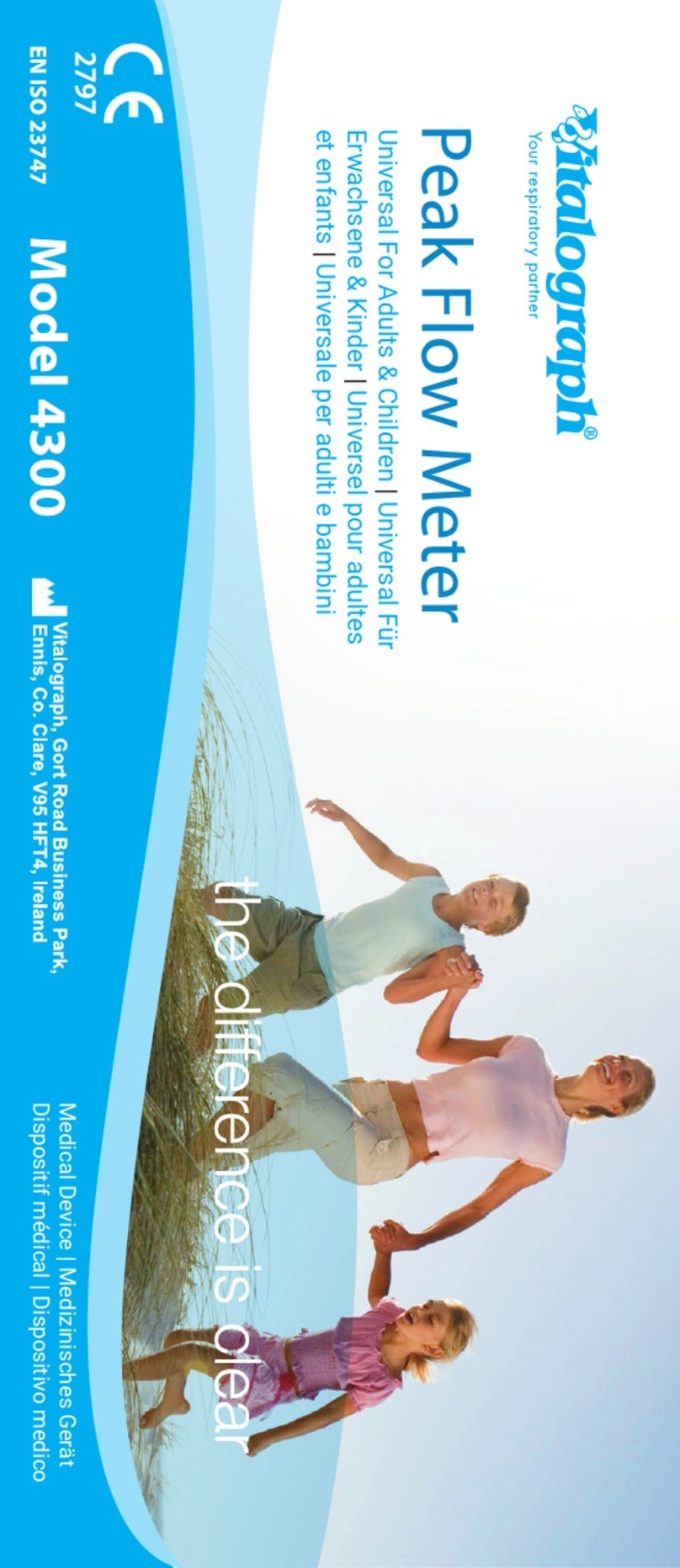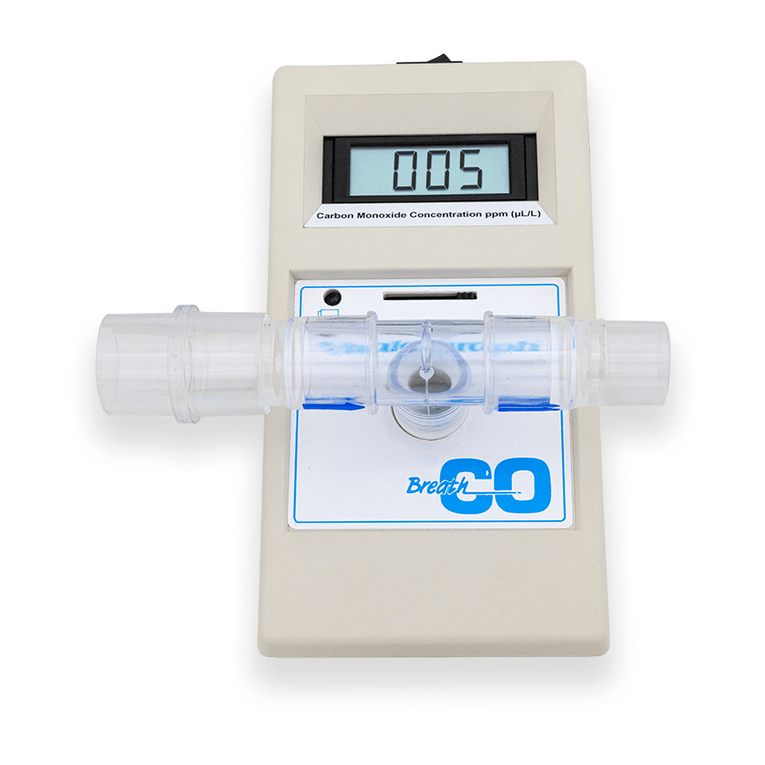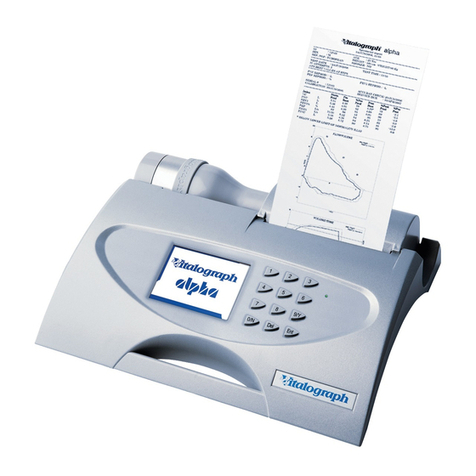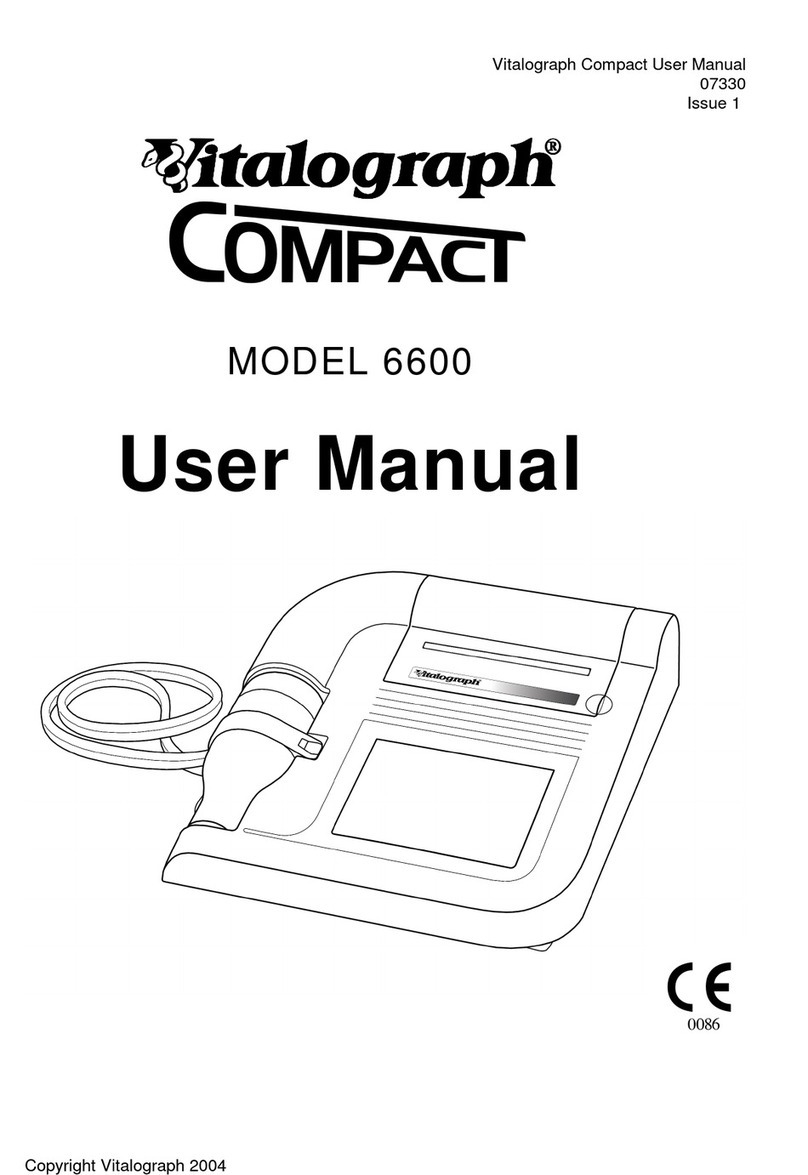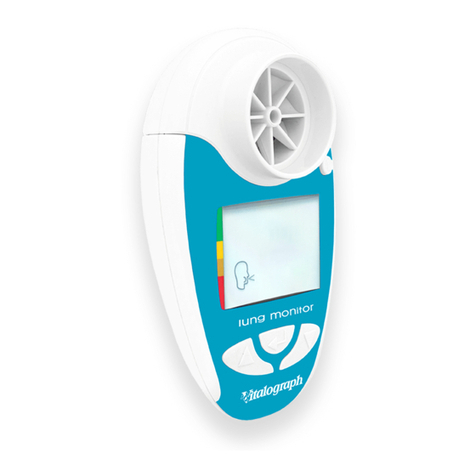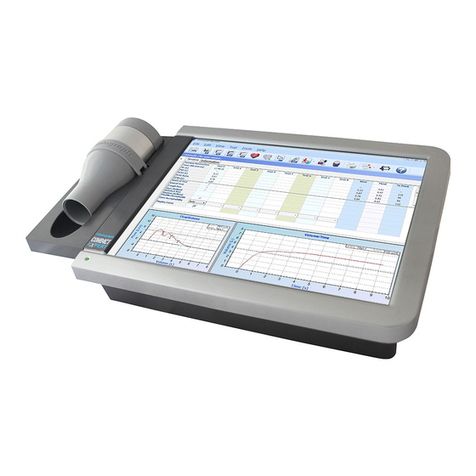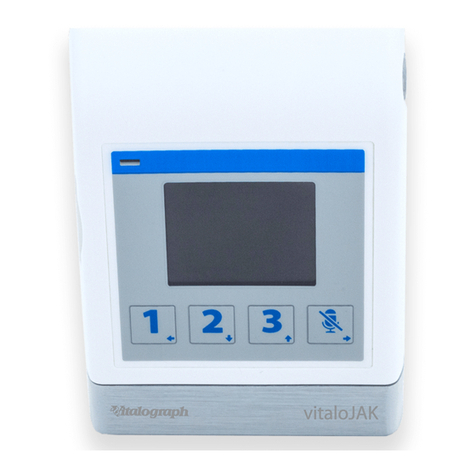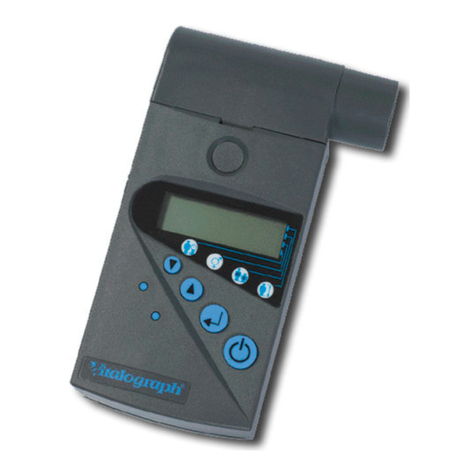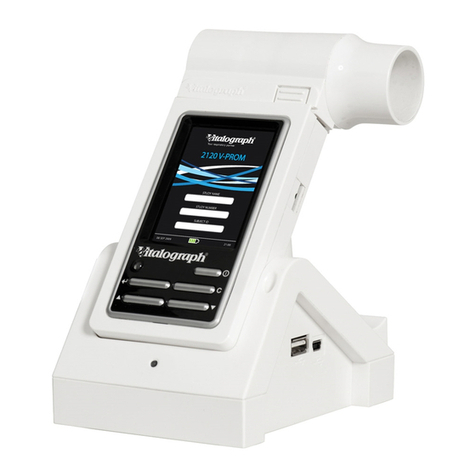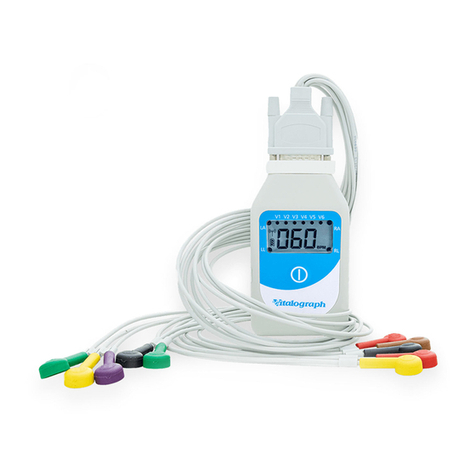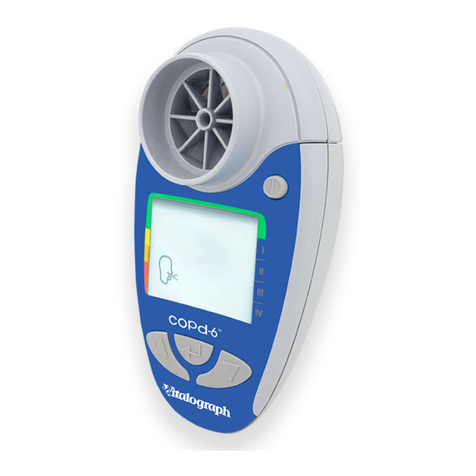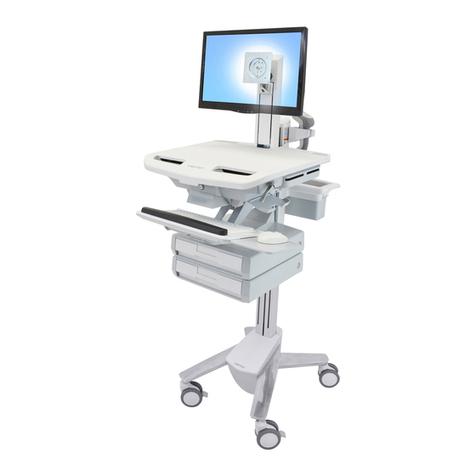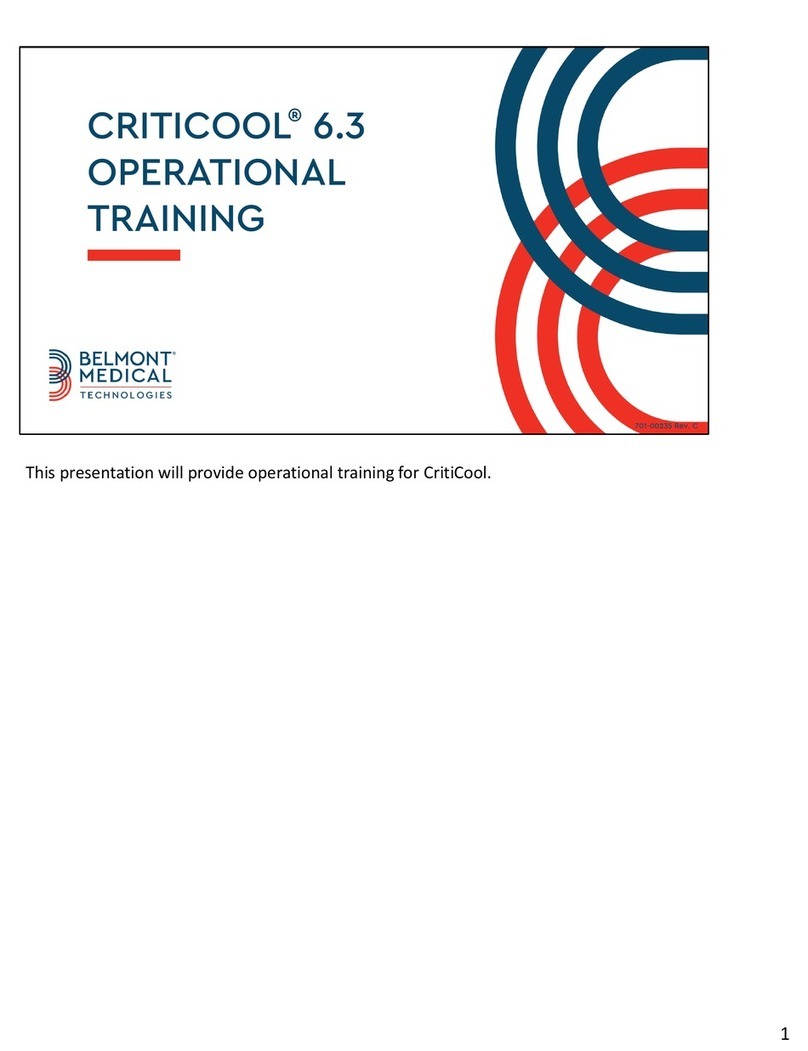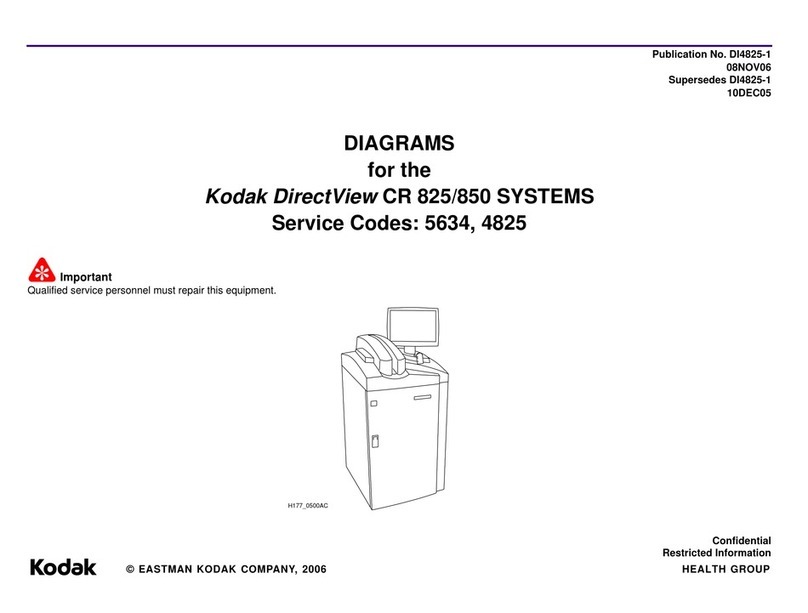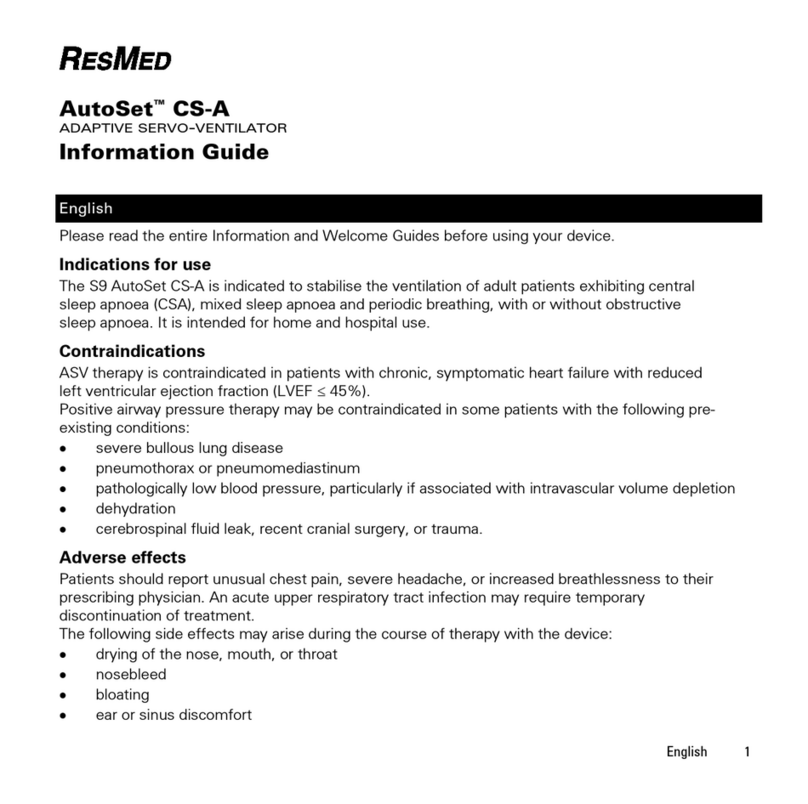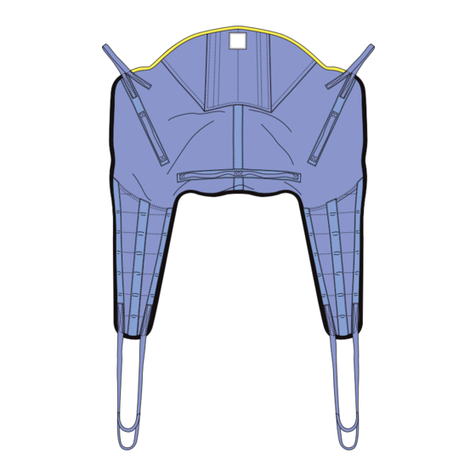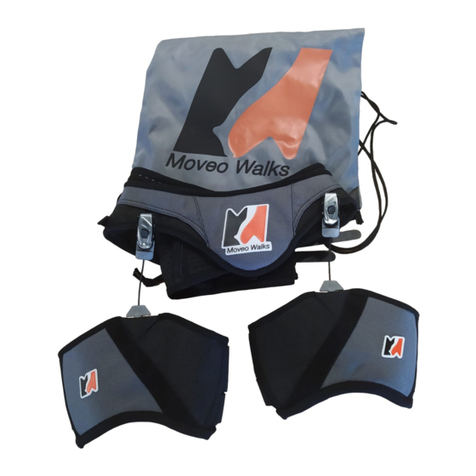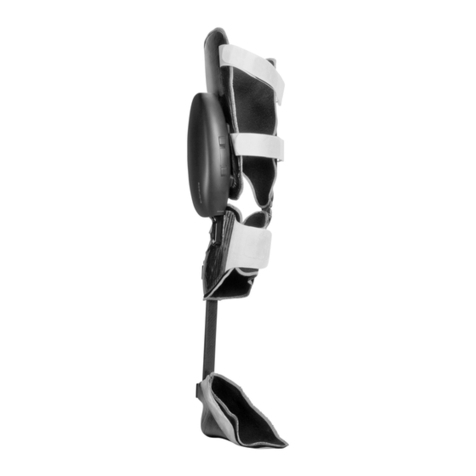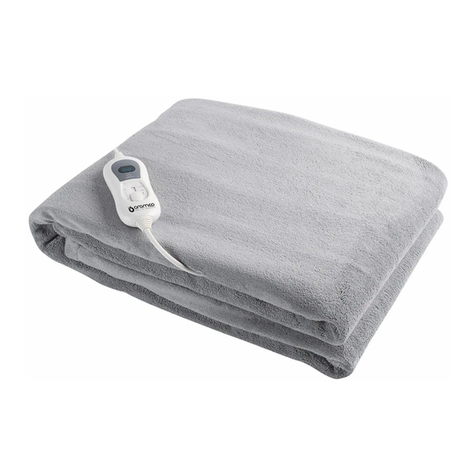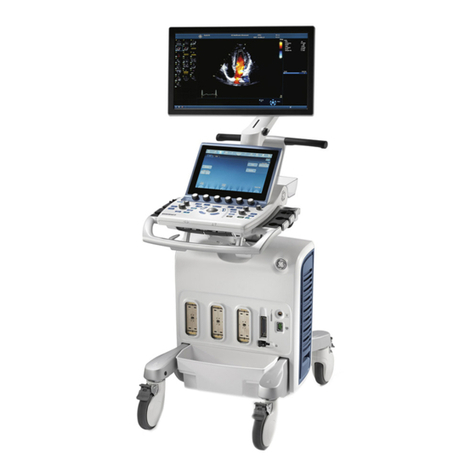1. DESCRIPTION OF THE VITALOGRAPH ASMA-1
The Vitalograph asma-1 is a medical device intended to give objective measures of lung function
for help in managing asthma. The device measures airflow out of the lungs when blown into as
hard and fast as possible. The Vitalograph asma-1 can reveal narrowing of the airways well in
advance of an asthma attack being felt by the asthmatic. Used mainly by persons with moderate to
severe and persistent asthma, the Vitalograph asma-1 can help determine:
when to seek emergency medical care.
the effectiveness of a person’s asthma management and treatment plan.
when to stop or add medication, as directed by the physician.
what triggers the asthma attack (such as exercise-induced asthma).
With asthma, sometimes the sufferer may feel their breathing is fine, but when the sufferer
measures it with the Vitalograph asma-1, lung function may be decreased. The Vitalograph asma-
1 can help the sufferer determine airway changes and better manage the asthma.
The primary healthcare professional needs to educate the sufferer in Self-Management of asthma.
This will start upon diagnosis and continue with all members of the healthcare team. The Action
Plan should be tailored to individual needs, but will include: basic facts about asthma; roles of
medication; skills required for devices and medication, environmental control measures; when and
how to take rescue actions.
1.1. The Asthma Sufferer
Most people with asthma need to monitor their asthma at least twice a day and to have a plan of
action to keep it under control. Although how the sufferer feels and what the sufferer can do is
important, PEF or FEV1 scores may accurately show how the breathing is changing. Modern
asthma medicines aim to give the sufferer the best possible score, keeping the sufferer in the
green zone. It is also important to aim for stable PEF/FEV1, i.e. little difference between morning
and evening scores and from day to day.
Many people over the ages of five will benefit from monitoring their asthma with the Vitalograph
asma-1, indicating when and how much to use their reliever medication. It will also help the doctor
because scores make it easier to see how well the asthma is controlled and when treatment needs
changing.
Only the doctor can determine the best Action Plan for the sufferer. This is likely to be preceded by
an initial assessment followed by a diagnostic phase. The Vitalograph asma-1 records many test
sessions for subsequent review by the healthcare professional. The Action Plan is then assessed
against the scores over several days. The treatment and/or Action Plan may be changed following
the diagnostic phase. This procedure may be repeated until the optimum Action Plan is proven.
The ‘Personal Best’ is the best PEF or FEV1 value that the sufferer can achieve - this is the ‘100%’
or ‘reference’ value. Population normative standards are not clinically useful in ongoing serial
monitoring of the asthma.
2. MAIN COMPONENTS OF THE VITALOGRAPH ASMA-1
A Keypad - Up, Down & Enter Button
B LCD
C Flowhead
On/Off Button
Down Button
Up Button
Enter Button

















